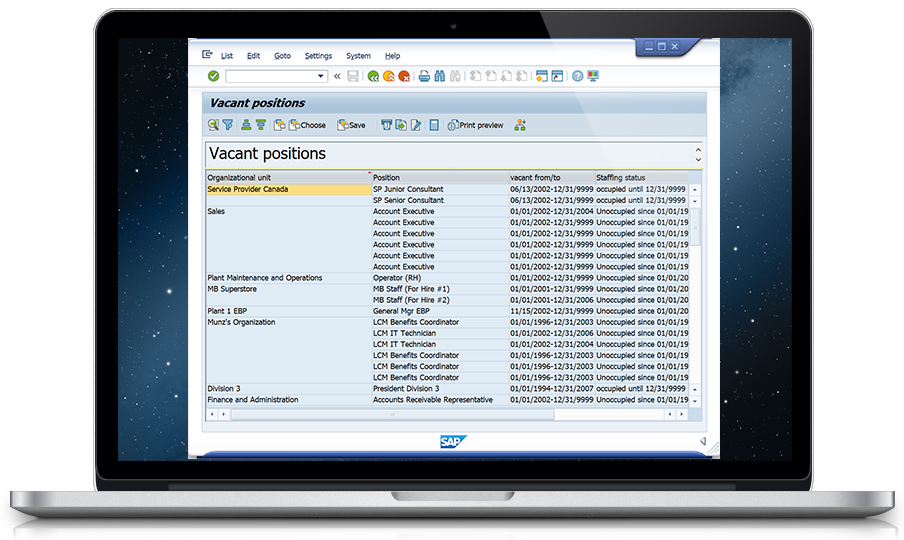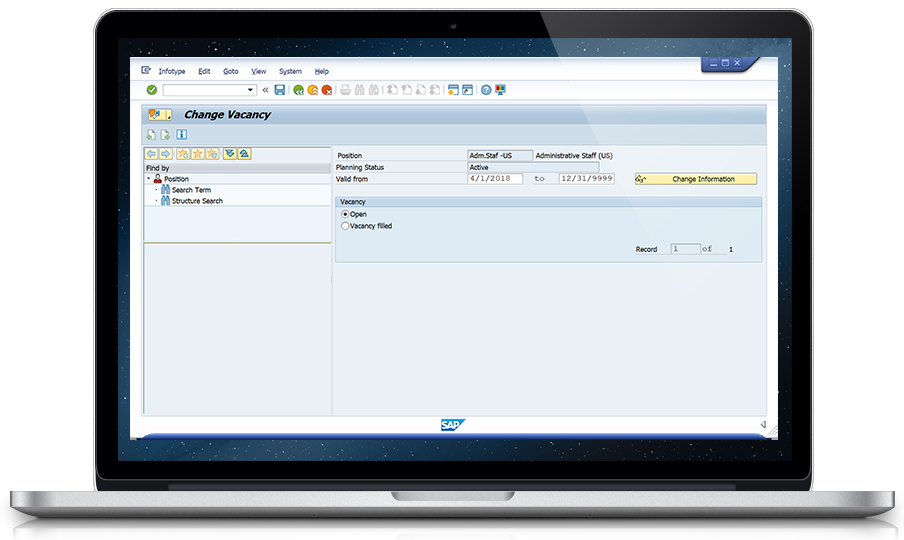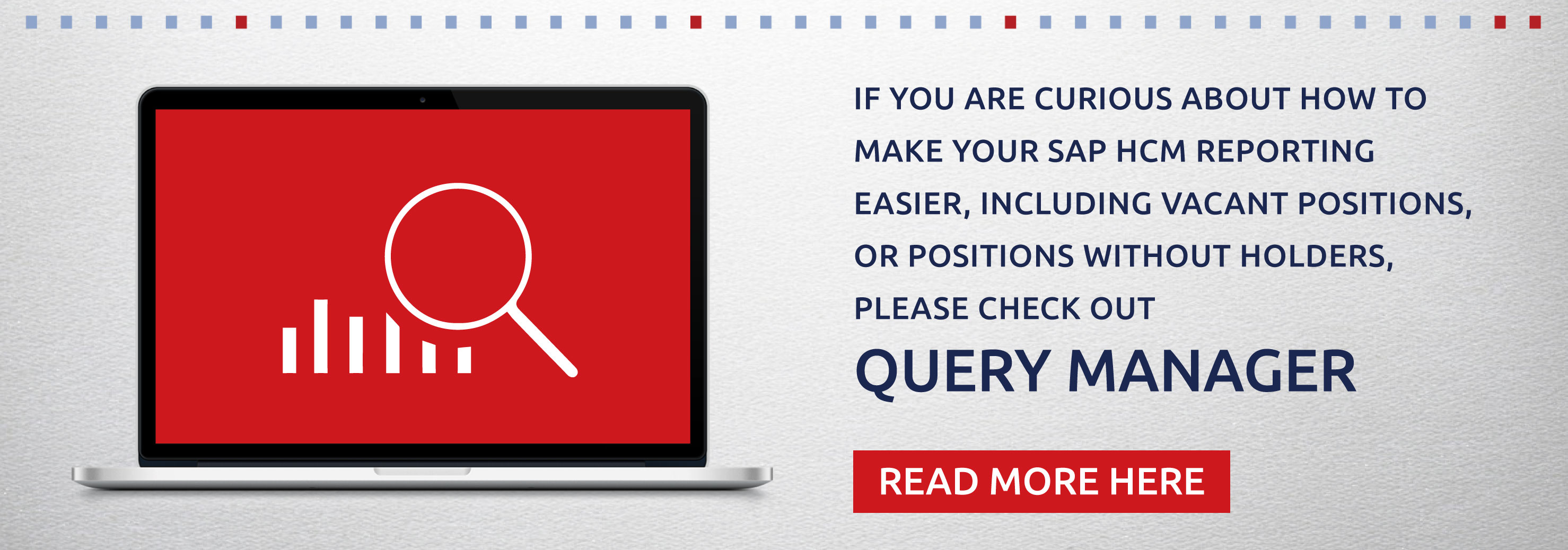Managing “Orphan” Positions
A common challenge for SAP HCM customers who have integration turned on between Personnel Administration and Organizational Management is the management of positions – or what many refer to as ‘orphan’ positions.
In a nutshell, positions in SAP are objects within the Organizational Management module. Org Management has several different types of objects: organizational units are object type O, jobs are object type C, and positions are object type S. These objects exist in Org Management regardless of whether they are attached to an employee on the Personnel Administration side or not.
That is the source of a common misunderstanding – thinking that when you terminate someone, the position is also delimited.
For example, let's use a real-world scenario: Company ABC has a new hire named Walter White. The first step is to create a position (or find an existing position) in the Organizational Management component in SAP. For this example, you create the position (i.e. Object number 5252000, Object description Shipping Clerk). Next, you initiate a hiring event (transaction code PA40) in the Personnel Administration side, and create a personnel number for Walter White (PERNR = 12345). During that hiring event, you create a relationship between the two existing objects, so that personnel number 12345 is related to position number 5252000 (in other words, Walter White is occupying the Position of Shipping Clerk). Behind the scenes, Walter also inherits all of the other relationships attached to the Position object, as shown below.
During a hiring event, when a relationship is created between a Person Object (P) and a Position Object (S), the person inherits all of the other relationships tied to that position, which in my example includes the cost center name, the cost center number, and the job code; all of which appear on the employee's infotype 0001 Organizational Assignment.
With a common configuration, when you terminate an employee in HCM, the only thing the system does is delimit (put an end date on) the Holder [A 008] relationship between the Person (P) and the Position (S). The Position Object, however, still exists after the employee has terminated; the position is not delimited and is still considered open with an end date of 12/31/9999.
A popular practice is to enable vacancy processing functionality, via the Vacancy Infotype 1007, such that during the termination event a dialog box appears asking the user if they wish to create a Vacancy for the position. If the user selects Yes, the position is flagged as “Vacant” and appears on the standard SAP-delivered Vacancy report. 
If the user selects No, then the position does not have a vacancy attached to it and remains out there.
Many customers simply leave their positions out there, unattached to positions with an end date of 12/31/9999. You can do that, but if you want a lean and clean system, you can routinely clean them up. A popular solution is to create an ABAP program that locates and identifies any position that does not have a holder attached to it (A 008 relationship between S and a P objects) and that also does not have the vacancy flag set as vacant on the Vacancy infotype 1007, and delimits them accordingly.

Note: If your company does not distinguish between vacant and unoccupied positions – that is, you consider all unoccupied positions to be vacant – you can set an indicator rather than maintain the Vacancy infotype, 1007. It is not mandatory that you utilize vacancy processing in HCM. You should, however, consider vacancy processing if you leverage the following HCM components: Personnel Cost Planning, Career and Succession Planning, or Applicant Administration. For these sub-modules, reuse of positions when they become vacant makes your processing easier. In the case of Succession Planning, if you create successor relationships from a person to a position and the position becomes vacant, you can easily identify who the successor to that position is and fill it accordingly.
Danielle Larocca
With over 20 years in SAP Human Capital Management, Danielle is a recognized leader in HR technology. She holds the distinguished roles of SAP Mentor and SuccessFactors Confidant, and serves as HCM Chairperson for ASUG (America's SAP User Group). Danielle is a sought-after speaker at international conferences, sharing insights on HR tech trends. She has authored four best-selling books on SAP and holds certifications in both SAP and SuccessFactors technologies.
